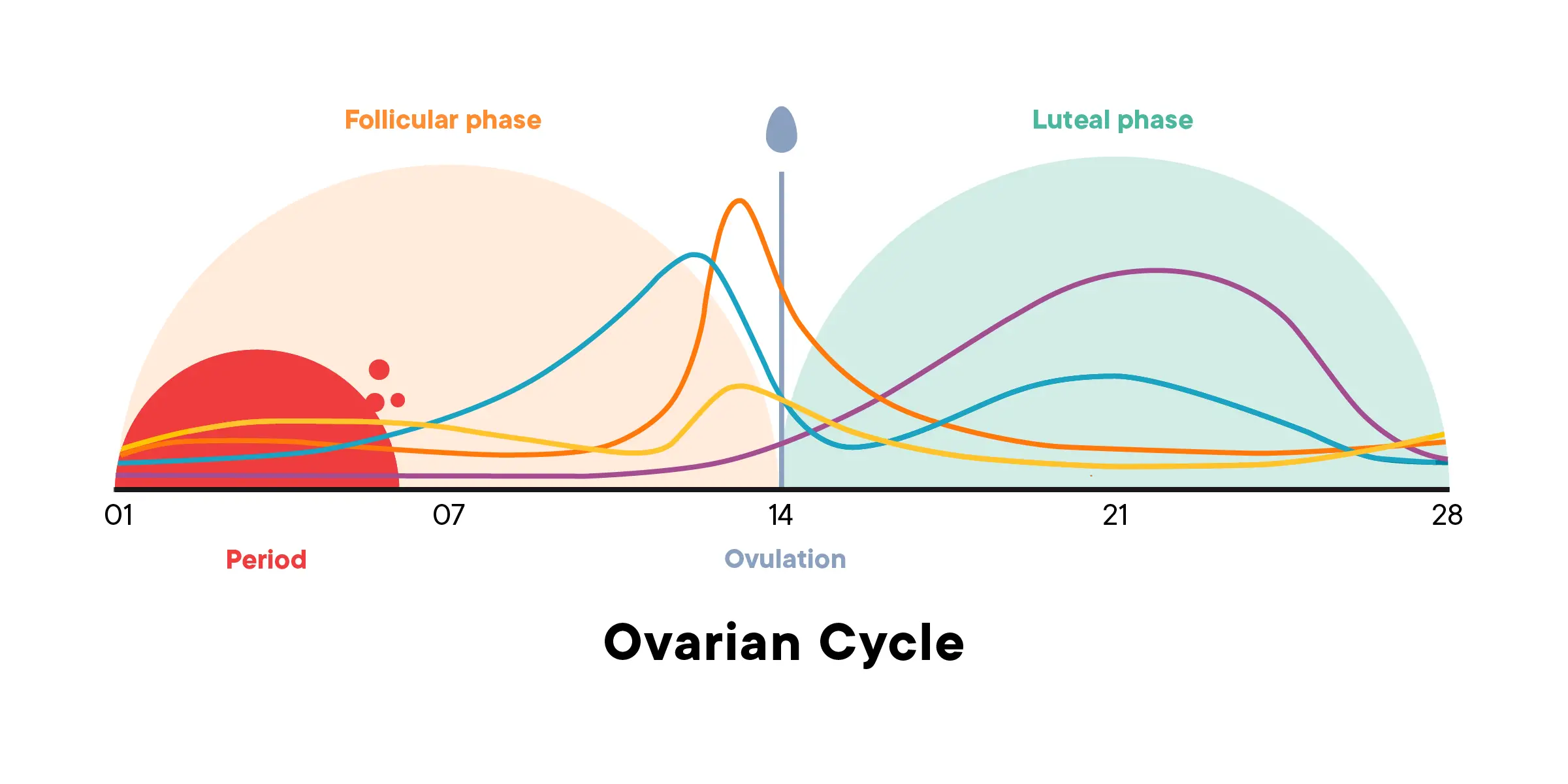The menstrual cycle and training - an overview
Increasing amounts of research are being dedicated to female physiology, especially in a sporting context. One important area of female specific factors related to sport is the menstrual cycle. We are learning more and more about how the menstrual cycle impacts performance, training adaptations and injury risk.
This article will outline the phases of the menstrual cycle and how training should adapt around each phase. The phase lengths outlined below are based on the average cycle length (28 days).
image cred: helloclue.comPhase 1 - Days 1-5
Early Follicular Phase, aka your period.
During this phase:
- you have higher levels of energy and pain tolerance
- have reduced muscular control
- some people experience a level of discomfort (cramps) but these ease over the 5 days
How should training adapt?
1) time to push yourself! Strength and pain tolerance is on the rise, so take advantage and push hard
2) do a thorough warm-up to accommodate impaired coordination
3) consume anti-inflammatory foods to help reduce menstrual symptoms
Phase 2 - Days 6-14
Late Follicular Phase
During this phase:
- energy and strength increase to a peak
- you have an increased ability to recover from high intensity work
- you are your most robust and coordinated version of yourself at this time
How should training adapt?
1) time to push yourself…again! This is an optimal time to focus on strength, plyometrics and high intensity cardiovascular work
2) this is the time to go for a PB in the gym
3) highest tolerance to carbohydrates due to your ability to utilise fuel in the muscles
Phase 3 - Days 14-21
Early Luteal Phase
+ Ovulation on day 14
During this phase:
- reduced ability to recover effectively
- increased heart rate at rest and during activity plus an increase in body temperature
- more likely to suffer DOMs during this time
How should training adapt?
1) increase your focus on flexibility, mobility and recovery
2) take longer rest between working sets to help control heart rate spikes
3) drink more water to manage higher body temperatures
4) consume more protein and snack on complex carbs to aid energy levels
Phase 4 - Days 22-28
Late Luteal Phase
During this phase:
- coordination, alertness, and pain tolerance are at an all time low
- reduced ability to recover and poor tolerance to high intensity work
- mood and motivation to train can be compromised
- increased injury risk due to increased laxity of ligaments/tendons and poorer coordination
- carb cravings are high due to an inability to utilised stored fuel
How should training adapt?
1) reduce intensity of training and increase rest intervals. Consider having more rest days
2) avoid tasks which are plyometric/high impact in nature
3) be aware of cravings (don’t ignore them), consume balanced meals and keep protein and water high


